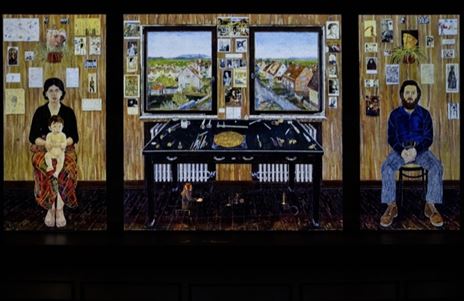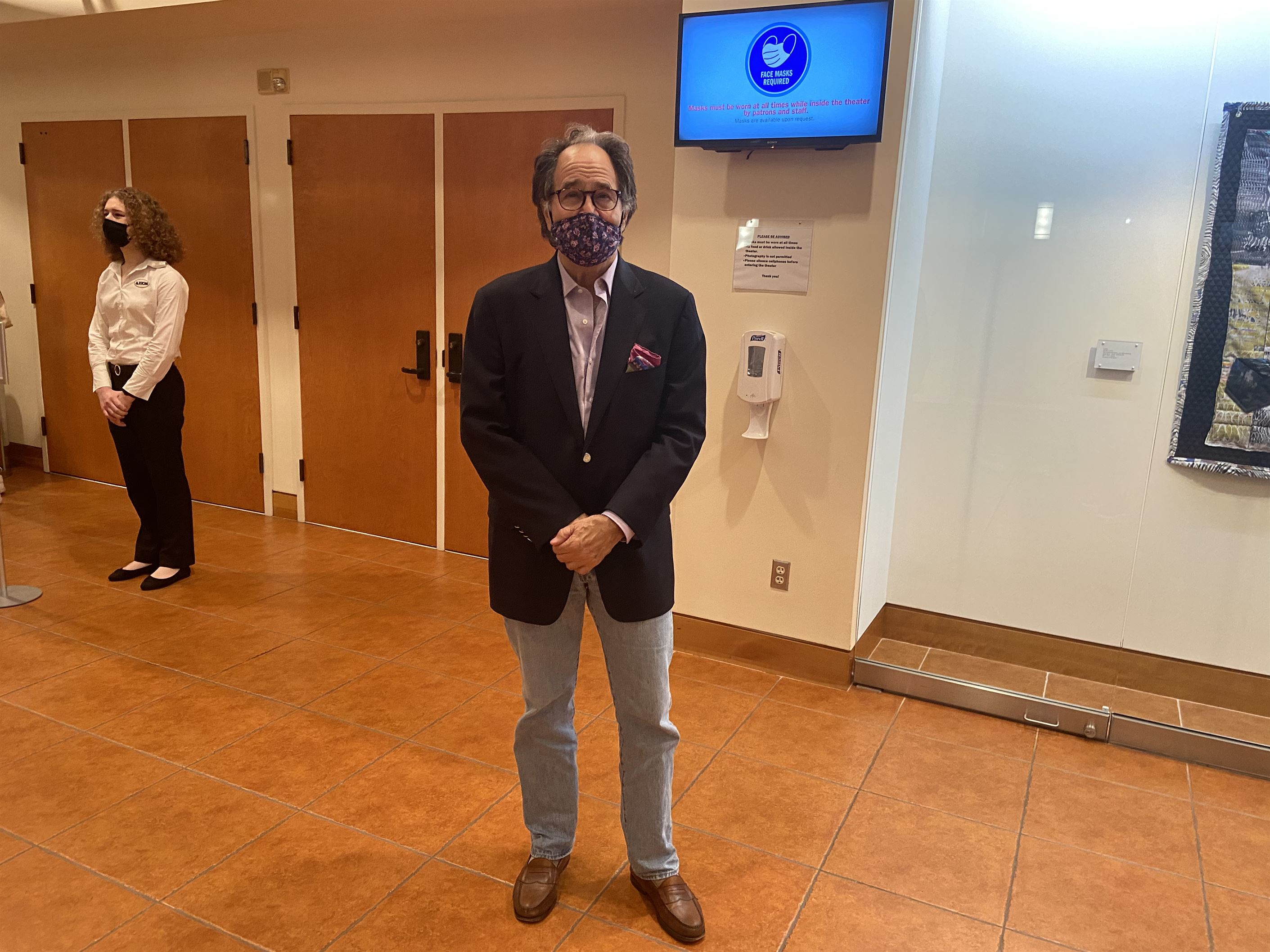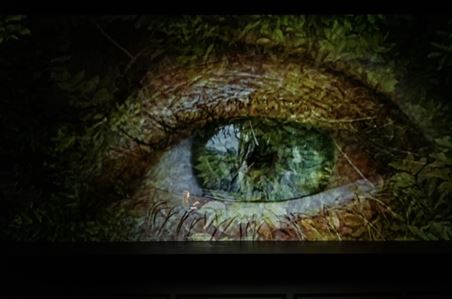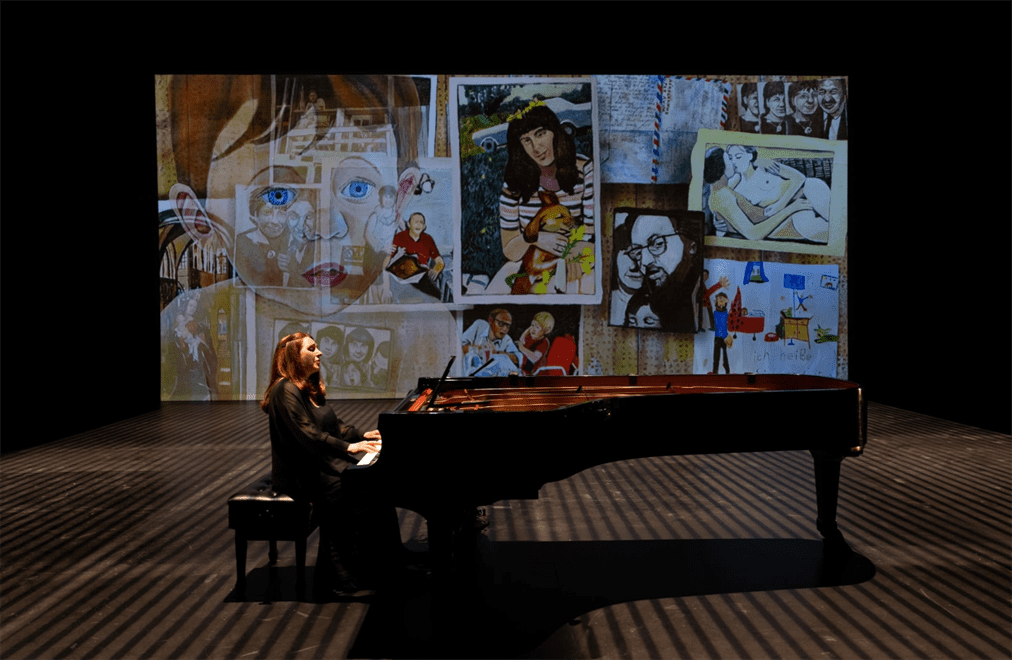From Oct. 14 to Oct. 17, the Alexander Kasser Theater housed the world premiere of American pianist Simone Dinnerstein’s “The Eye is the First Circle.”
In this 55-minute presentation, Dinnerstein performed Charles Ives’ “Piano Sonata No. 2,” also known as the “Concord Sonata,” accompanied with visuals from her father’s painting, “The Fulbright Triptych.”

“The Fulbright Triptych,” painted by Dinnerstein’s father, is included in the performance.
Photo Courtesy of Maria Baranova
What makes this particular piece unique is that it’s Dinnerstein’s first attempt at directing and conceiving an entire process. She worked in collaboration with projection designer Laurie Olinder and lighting designer Davison Scandrett. Dinnerstein was able to sit with the team to try displaying different images while listening to recordings of the music, testing if they matched her ideas of what each scene could be.
Jedediah Wheeler, the executive director of Arts and Cultural Programming, explained the aim of PEAK performances, for which “The Eye is the First Circle” kicked off the 2021-2022 season.
“PEAK performances is a series that focuses on contemporary dance, music, theater, opera and circus from all around the world,” Wheeler said. “And we support the best new ideas in those disciplines.”

Jedediah Wheeler is the executive director of Arts and Cultural Programming.
Photo courtesy of Alison Jackson
What made Wheeler interested in Dinnerstein and her work, in particular, was its originality.
“It was unprecedented,” Wheeler said. “She has never done anything like this before.”
Before the show, Wheeler welcomed both familiar and unfamiliar faces in the audience back to the theater. After over a year and a half without live performances, this was quite the experience for everyone watching.
The lights dimmed and the curtain rose to reveal three screens: two on either side of the stage and one in the middle, just above Dinnerstein playing the piano. All three screens showed different visuals, including trees, family photos and a projected video of Dinnerstein’s hands touching the keys in real-time.
One particular theme of the visuals that really stood out was nature, as projections of trees and the sounds of birds chirping were included. We even see a projection of Dinnerstein walking in the garden her parents owned at her childhood home. This particular musical piece relates to the era of transcendentalists, and nature was a huge part of their philosophy.

Dinnerstein feels more connected to nature as an adult compared to her younger self.
Photo courtesy of Maria Baranova
The display of the screens changed throughout. By the third movement of the piece, there was a back wall screen behind Dinnerstein as the background, and on the fourth and last movement, it reversed with a scrim in front of her. But in the end, all the fragments came together into one visual: the painting, including the copper plate on the table that symbolized the circle, or more specifically, an eye.

“The Eye is the First Circle” kicked off the 2021-2022 season of PEAK performances.
Photo courtesy of Maria Baranova
Much of the performance and its symbolism is up for interpretation, Dinnerstein notes.
“Art is more powerful when it’s both specific and abstract at the same time,” Dinnerstein said.
Whether one took this performance to be about family, love or memory, it is a piece that deserves the standing ovation and cheers that were saved from the audience until the very end.
This performance is considered to be a huge step in the return of live performances at the Alexander Kasser Theater and seen by Wheeler as a way to excite audiences with an artist who did something out of the ordinary. “The Eye is the First Circle” shows how one can step out of their comfort zone by going back to the theater for a positive experience after coming out of a negative experience such as the coronavirus (COVID-19) pandemic.
Dinnerstein herself felt strongly about the opportunity to perform in person.
“It’s really amazing,” Dinnerstein said. “It made me appreciate the audience a lot more.”
Not only do I recommend checking out the rest of the PEAK performance series, especially if you’re a campus resident, but make sure to also give Dinnerstein’s work a listen as her in-person performance of “The Eye is the First Circle” will move you. It might even bring a tear to your eye.



